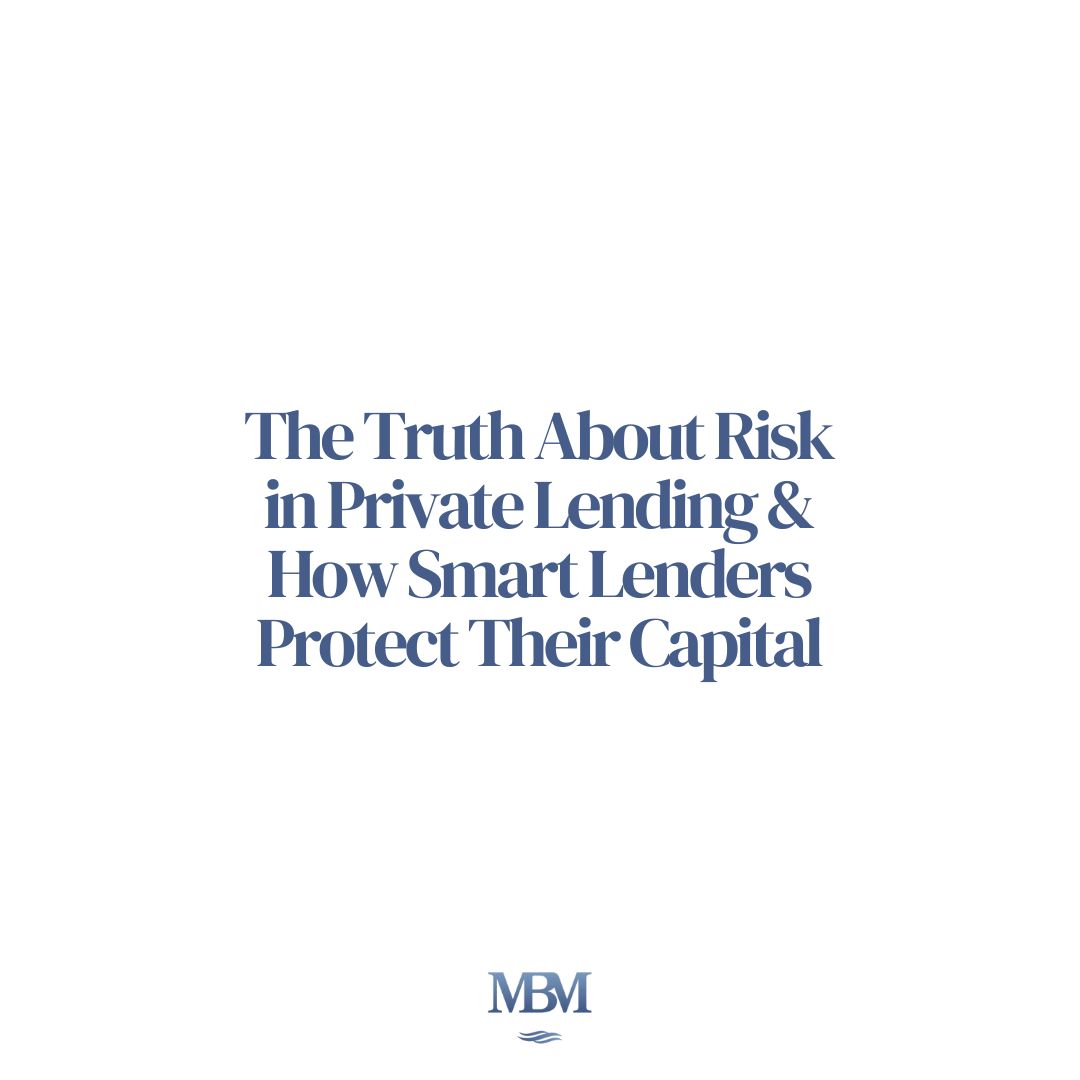Private lending is one of the most powerful ways to grow wealth—steady returns, asset-backed security, and no tenants, toilets, or turnovers. But ask anyone considering it for the first time, and the question always surfaces:
“What if the borrower doesn’t pay me back?”
That fear is valid. But here’s the truth: most losses in private lending don’t come from bad luck—they come from bad underwriting. Deals that are rushed. Collateral that’s weak. Terms that weren’t structured to protect the lender.
In this guide, we’ll break down the real risks of private lending, what causes lenders to lose money, and exactly how smart lenders protect their capital—deal after deal.
How to Build a Deal Flow Pipeline as a Private Lender
The Real Reasons Private Lenders Lose Money
It’s rarely one big thing. It’s usually one of these five:
Lending Too High on the Value
If your loan-to-value (LTV) is too high—say 85–90%—you’re giving the borrower too much room to fail. If the market dips or the deal goes sideways, you have no cushion.
Not Securing the Loan with the Property
Some lenders hand over money without recording a lien or mortgage. That means if the borrower defaults, you’re just another person hoping to get paid back—with no legal claim to the asset.
Working with the Wrong Borrower
Just because someone is confident doesn’t mean they’re competent. If the borrower has no track record, no experience, and no plan—and you lend anyway—you’re gambling, not investing.
No Clear Exit Strategy
How will you get your money back? If there’s no timeline, no sale, no refinance plan, you’ve basically handed out a blank check.
Weak Contracts or Verbal Agreements
If it’s not in writing and enforceable, it’s worthless. Period.
Smart Lenders Don’t Avoid Risk—They Price and Control It
You can’t eliminate all risk. But smart lenders control it, structure it, and price it in.
Here’s how they do it.
Keep LTV Low and Strategic
The lower your LTV, the more margin of safety you have.
General rule:
- For flips → Keep it under 70% of ARV
- For rentals → 70–75% of current value max
- For new investors → Be even more conservative (60–65%)
Why it matters:
If a borrower defaults and you have to take back the property, you want to know there’s plenty of equity in it. Low LTV means you can recover your principal—even if you have to sell below market.
Use the Property as Collateral—Always
Smart lenders don’t rely on promises. They secure their loans with the asset itself.
That means:
- Recording a lien or mortgage on the property
- Using a promissory note to spell out loan terms
- Ensuring you’re in first lien position, or second only with extreme caution
What this does:
If things go south, you have legal leverage. You’re not asking to get paid—you’re enforcing the contract.
Vet the Borrower Like a Business Partner
Your borrower is your risk manager. They’re the one executing the deal.
What smart lenders ask:
- How many deals have you completed?
- Can you walk me through your last project’s timeline and outcome?
- What contractors and team members are you working with?
- What’s your liquidity if this project goes over budget?
You’re not just funding a deal. You’re backing a person. If they can’t answer basic questions with clarity and confidence—pass.
Insist on a Real Exit Plan
Every deal should have a clear answer to:
“How are you paying me back?”
It might be:
- Selling the property after renovations
- Refinancing with a long-term mortgage
- Selling another property to cover the payoff
Whatever it is, it needs to be:
- Specific
- Timed
- Backed by numbers
If the borrower says, “I’ll figure it out,”—you’ve already figured it out. Don’t lend.
Use Ironclad Contracts and Legal Protections
This isn’t casual. This is business. Your documents should reflect that.
Every loan you issue should be backed by:
- A promissory note outlining loan terms
- A mortgage or deed of trust securing the property
- A personal guarantee if the borrower doesn’t have strong collateral
- Properly recorded documents through a real estate attorney or title company
Don’t send money until all legal documents are signed, recorded, and reviewed.
Bonus: Price the Risk Appropriately
Smart lenders don’t just protect their downside—they price it in.
If a deal is riskier:
- You charge more interest
- You keep the term shorter
- You reduce the LTV
- You add a personal guarantee
You’re not being “harsh.” You’re being smart. You’re managing your capital like a professional, not a hobbyist.
How The MicroBanking Method Helps You Lend with Confidence
The MicroBanking Method was built for lenders who want high returns without sleepless nights. It gives you:
- Deal evaluation checklists
- Contract templates and legal guidance
- Risk filters and borrower screening tools
- Training to help you say no to bad deals fast—and yes to the right ones with full clarity
It’s not about avoiding risk—it’s about being so well prepared that risk works in your favor.
Conclusion: The Truth About Risk in Private Lending
Private lending isn’t risky when done right. It becomes risky when you:
- Ignore LTV
- Skip due diligence
- Work with unqualified borrowers
- Avoid proper legal structure
The smartest lenders don’t gamble. They build systems, follow frameworks, and protect every dollar they deploy.
Want to structure your lending the right way from day one? Visit The MicroBanking Method to start lending with clarity, confidence, and control.




